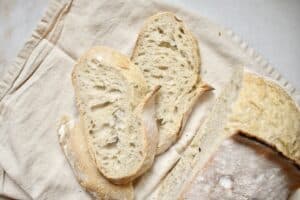We have been reading the Little House on the Prairie series to our girls at bed time. It is a wonderful series that I never read as a child. We are all enjoying it very much. I am continually struck by how much effort it took to keep food on the table for a farmers wife in the mid 1800’s. It was an all year around effort. Farmer Boy is particularly full of these details. They made cheese and butter from the cows they milked each morning and night. At the end of the harvest they pickled cucumbers, green tomatoes and water mellon rind. They dried corn and apples and made preserves. They did their own butchering. They made sausages and boiled pork fat to make clean lard.Then they boiled the heads of the butchered pigs to make something called headcheese. They wasted nothing!
As I read about their life I am SO thankful for our modern conveniences. I also wonder what happened to the amazing skills and knowledge they had to keep their families well feed. They didn’t have a grocery store that stocks strawberries in January and perfectly cut boneless, skinless chicken breasts. They had to grow and process nearly everything they ate themselves.
So, you ask, how does all this relate to Nourishing Traditions! Great question. I have had the book for 1 week now and the initial feeling of panic is wearing off. It is being replaced with fascination. Sally Fallon is teaching us many of the skills that were lost with the advent of modern technology. So much of this wisdom about food was not passed to new generations because we became so impressed with what technology could do with our food production. And now we have inherited both the benefits and the consequences. Nourishing Traditions seeks to correct many of the unfortunate effects of industrializing our food system.
After looking through the many recipes in this book, it quickly became apparent that some advanced preparation was needed. Lots of the recipes call for whey, or some other form of cultured milk. (Look for Erin’s post on Culture Milk 101 coming soon for a detail description of this process!) In order to follow the recipes for culturing milk, I discovered I needed to find things I did not have. Sally Fallon calls for piima powder to make piima Starter Culture, which makes Piima Milk, which makes whey and cream cheese. She calls for kefir grains to make homemade kefir. As I have been reading and researching, I have run across some good resources I want to share with you.
- You can find piima powder, kefir grains, and sourdough starter at moonwiseherbs.com . This is the site that NT suggests. I have just ordered piima powder from them and will update when it arrives.
- You can find sources of raw milk near you if you desire to use it at realmilk.com.
- Nourishing Traditions and Sally Fallon are connected to an organization called The Weston A. Price Foundation. Their web site is full of great resources. You can search for a local chapter of the foundation near you to help you find sources of organic meats, dairy and produce. They have recipes posted and articles on relevant health topics. There is lots of helpful information.
Each time Erin or I write about a recipe we have tried, we will include an estimate of lead time needed, a taste rating based on a scale of 1-6, (We both have 6 eaters in our household, so one thumb up or down per person), and a cooks rating based on ease of preparation, cost, and relative availability of the ingredients.





